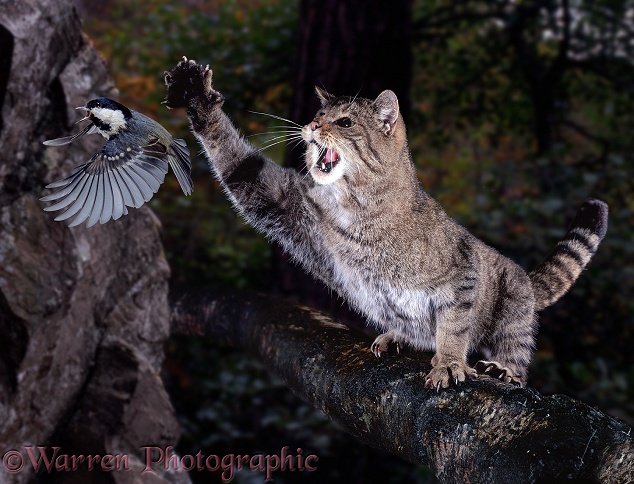

Note: The initial introduction should take place during a time when the cats are calm - perhaps shortly after a meal or play time. Continue this until the cats have shown no tension around each other for a couple of days, then open the door and proceed as above. Praise them for being calm when they see each other. If one of the cats won’t eat, move the food far enough from the door for the cat to feel secure enough to eat. Continue to feed treats to the cats on opposite sides of the door. Allow the cats to see each other while maintaining a physical barrier, such as stacking baby gates in the doorway, opening the door an inch or two and using a door stop to keep the door open, or putting in a screen door. If it takes more than seven days for the hissing to stop, things need to go more gradually. Separate them if the hissing doesn’t die down after 1 or 2 minutes or if there is any sign of threat (swatting with force, chasing, screaming, ears flattened, etc.). Again, some hissing when they see each other is normal so don’t be alarmed. As long as they appear to be relaxed, allow them both out.

Have some treats handy so they can have a pleasant experience together right away. Do not force either cat to see the other.

If there is no hissing within seven days of your new cat being home, just open the door and permit the cats to explore. Don’t punish the cats for hissing or growling as that can form a negative association about the other cat, as well as you.Īllow the cats to see each other once there has been no hissing for a couple of days. Some hissing is normal during this stage. You can also swap bedding every couple of days so they can further explore each other’s scent. Do this by feeding treats or canned food to them near the door that separates them. The Feliway® pheromone helps to reduce anxiety during times of change.Įncourage positive associations between the cats while they are separated. We recommend using Comfort Zone® with Feliway® diffusers or spray during this separation, as well as the initial stages of the introduction. This allows the cats to get used to each other’s scent without needing to confront the other. House the new cat in a separate room for at least seven days with food, water, comfortable bedding, a litter box(es), and all of the necessities to keep him happy and healthy. Here are a few tips and precautionary steps to help make cat-cat introductions pleasant for everyone involved. By providing a slow and steady introduction, the result can be rewarding for both your feline companions. They may refer you to an animal behaviourist.First impressions between pets are just as important as they are between people. If you're concerned about your cats behaviour, speak to your vet first.


 0 kommentar(er)
0 kommentar(er)
